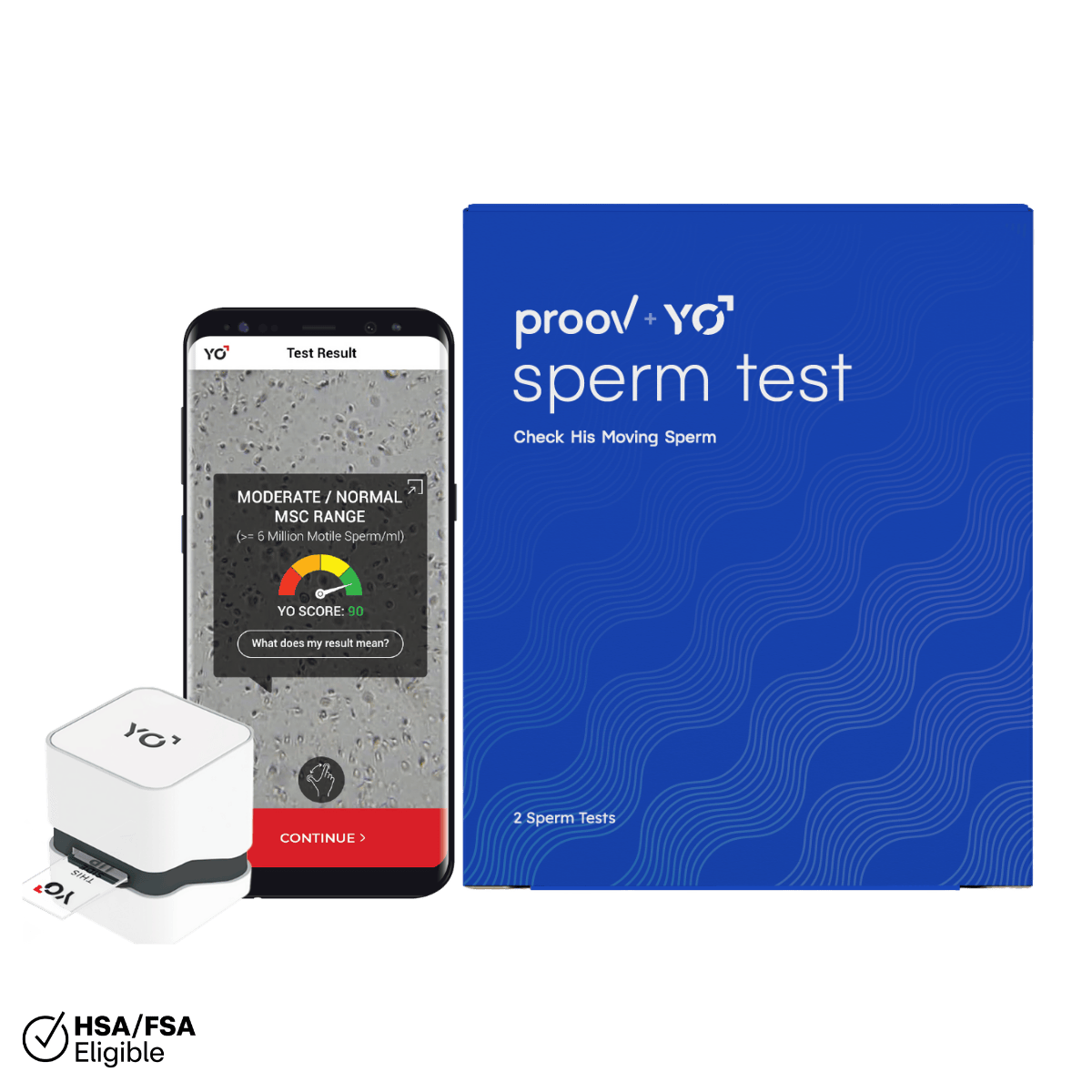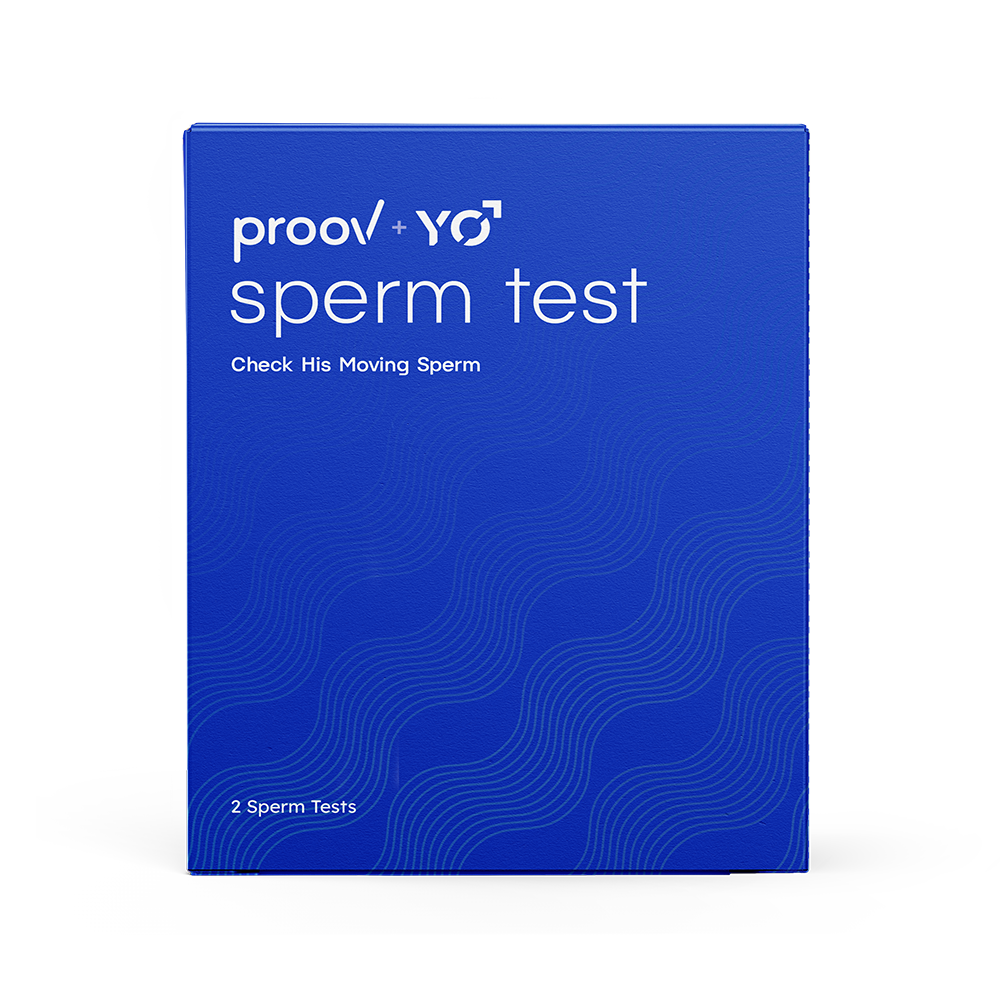Updated on 8/14/23
LH tests, or ovulation tests, are one of the most popular tools when trying to conceive. And for good reason! They can help you identify your two most fertile days to time intercourse around when it’s most likely to result in conception.
However, contrary to popular belief, ovulation tests don’t actually confirm that you’ve ovulated. Instead, they track a luteinizing hormone (LH) surge that triggers ovulation and typically precedes it.
So, how long after an LH surge do you ovulate? We're here to help you find out!
What is LH and why should you track it?
We start each new cycle with a clean slate: our hormones reset to their baseline level around cycle day 3 (with cycle day 1 being the first day of your period). From then on, our hormones will rise and fall throughout our cycle as our body prepares for ovulation and potential pregnancy.
Once your brain detects low hormone levels, it knows that it’s time to start a new cycle. To do this, it sends out a little follicle stimulating hormone (FSH) to stimulate your ovaries and help recruit the best follicle, which will eventually release an egg.
As the dominant follicle matures, it no longer needs FSH to grow, and will start producing estrogen. Estrogen helps thicken your uterine lining, preparing it for implantation in the event that conception occurs.
Once estrogen reaches a certain level indicating a mature follicle and egg, the brain releases a surge of LH to rupture the follicle and trigger it to release the egg. Without an LH surge, ovulation cannot occur.
Tracking LH gives you insight into your fertile window — the few days leading up to and the day of ovulation when intercourse most likely results in conception. An LH surge identifies your two most fertile days to help you time intercourse accurately.
By now, you may be wondering, But can’t I just use an ovulation calculator or tracking app to time intercourse? While most cycle tracking apps can help you track your periods and your symptoms, many fail to accurately predict ovulation.
In fact, a study that included data from over 600,000 menstrual cycles showed that 54% calendar-based fertility apps predict ovulation solely based on cycle length. It’s not surprising, then, that the study concluded calendar apps are not accurate at detecting the fertile window or predicting ovulation.
Instead, tracking real hormone data, like LH, can help you more accurately pinpoint your fertile window and predict ovulation, rather than relying on cycle length data alone.
How can I test my LH levels?
LH can be tested via blood in a lab. But, aside from this being an invasive and expensive method, it can be inconvenient in natural cycles, where we test levels at least one (if not twice) per day to try and catch the LH surge.
Luckily, urine-based LH tests (also called ovulation tests) make LH tracking non-invasive and less expensive. With a test like Proov Predict, we can identify an LH peak from the comfort of home and either optimize chances of pregnancy or more generally track our cycle.
While many at-home LH tests only show qualitative results (i.e. positive or negative), using Proov Predict LH tests with the Proov Insight app takes your results even further by providing numerical hormone data. It also allows you to see your LH levels change over time and offers information about what your results mean. It’s like having a personal fertility coach right in your pocket!
You should start testing LH levels about 18 days before your next suspected period. Don’t worry — the Proov Insight app will do the math for you and remind you exactly when to test.
Studies show LH levels peak in blood around midnight and 8 am for most people and, once it peaks, LH needs a few hours to appear in urine. Because of this, you can test LH in second morning urine, after a 2-3 hour hold, so you don’t miss that early morning surge.
Additionally we recommend testing LH levels with Proov Predict in the evening. Often, LH surges can be short, so testing two times per day ensures you don’t miss it.
Your first positive LH test (also referred to as “peak fertility”) confirms an LH surge. This means ovulation should occur in the next two days, meaning these are the two most fertile days of your cycle.
How long after an LH surge do you ovulate?
LH surges can vary a lot in duration, although on average they last around 12 to 36 hours. A study observing 107 women over 326 cycles noted that 75% of them would ovulate under 48 hours after their first positive LH test (what we refer to as “peak fertility”).
For just 6% of them, their surge ended before the ovulation day was confirmed via ultrasound. For 94% of them, their LH surge continued after ovulation day and, out of these women, 60% still had positive LH tests more than 3 days after the egg was released!
This means that waiting until you receive your darkest LH test (indicating the highest concentration of LH in urine), may cause you to miss your fertile window entirely. To avoid this, the Proov PdG testing protocol is based on your first positive LH test as peak fertility — no need to continue testing after that!
The research also noted some women may experience more than one LH surge in a single cycle, which only emphasizes the need to confirm ovulation. The vast majority of cycles (75%) have one LH surge before ovulation, but some women may observe double peak surges, multiple surges, or elevated LH levels throughout the cycle.
We typically see this in those with PCOS who, due to an overall hormonal imbalance, experience elevated LH levels throughout their cycles. For these people, LH tests may not be the most reliable way to track ovulation in which case we recommend instead monitoring cervical mucus and confirming ovulation with a PdG (progesterone marker) test.
Does an LH surge mean you actually ovulated?
The short answer is no — an LH surge does not confirm ovulation. With LH surges varying drastically in length and intensity, confirming you did in fact ovulate ensures your surge was a real one, rather than a false start.
While ovulation can be confirmed in a few ways — for example via ultrasound, basal body temperature, or a progesterone blood test — here at Proov we’re still partial to the PdG test. PdG (a urine marker of progesterone) testing offers an accurate, non-invasive way to confirm that ovulation did in fact occur.
Proov Confirm PdG tests are the first and only FDA cleared PdG test kit to confirm successful ovulation at home. While a single positive PdG test confirms that your LH surge resulted in ovulation, our patented PdG testing protocol helps you assess whether or not ovulation was successful, allowing for the best possible chance at pregnancy.
In fact, a clinical study showed that elevated PdG levels during the implantation window can increase pregnancy rates by up to 75%!*
The more you know about your cycle — including how long after an LH surge you ovulate — makes you more prepared when trying to conceive!
P.S. If you're looking to predict and confirm ovulation all in one kit, try Complete!
*Amy Beckley, Joshua Klein, John Park, Aimee Eyvazzadeh, Gary Levy, Alexandra Koudele. The predictive value of urinary progesterone metabolite PdG testing in pregnancy outcomes. Obstetrics and Gynecology Research 5 (2022): 194-198.














